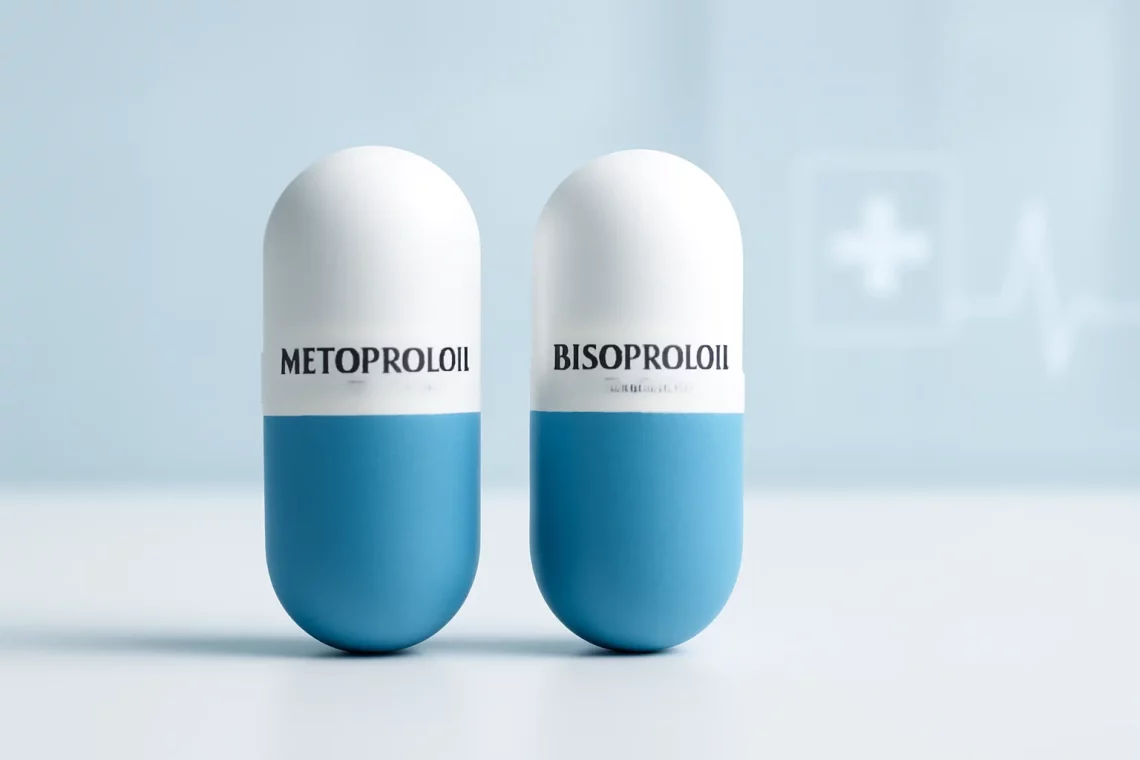
Metoprolol vs Bisoprolol: Key Differences and Similarities Explained
Metoprolol and bisoprolol are two commonly prescribed medications that belong to the class of drugs known as beta-blockers. These medications are primarily used to manage cardiovascular conditions, including hypertension (high blood pressure), heart failure, and certain types of arrhythmias (irregular heartbeats). Beta-blockers work by blocking the effects of adrenaline on the heart, which helps to reduce heart rate and lower blood pressure.
In recent years, there has been significant discussion among healthcare providers and patients regarding the differences and similarities between metoprolol and bisoprolol. Both medications have proven effective, but they do have distinct characteristics, mechanisms of action, and side effect profiles that may influence the choice of one over the other for individual patients. Understanding these differences can empower patients to engage in informed discussions with their healthcare providers regarding their treatment options.
In the following sections, we will delve deeper into the unique properties of metoprolol and bisoprolol, offering insights into their pharmacological profiles, common indications, and potential side effects to facilitate a better understanding of these two important medications.
Pharmacological Properties of Metoprolol
Metoprolol is a selective beta-1 adrenergic receptor blocker, which means it primarily targets the beta-1 receptors found in the heart. By inhibiting these receptors, metoprolol effectively reduces heart rate and myocardial contractility. This action is beneficial in conditions such as hypertension and heart failure, where decreased heart workload is critical.
One of the notable features of metoprolol is its relatively short half-life, which typically ranges from 3 to 7 hours. This characteristic affects how often the medication needs to be taken. Metoprolol is available in both immediate-release and extended-release formulations, allowing for flexibility based on a patient’s specific needs. The extended-release version, metoprolol succinate, is often preferred for chronic conditions as it allows for once-daily dosing, which can improve patient adherence to the medication regimen.
In clinical practice, metoprolol is frequently prescribed for various cardiovascular conditions. In addition to hypertension and heart failure, it is also used to manage angina (chest pain) and to prevent migraines. Furthermore, metoprolol has been shown to reduce the risk of mortality in patients who have experienced a myocardial infarction (heart attack), making it a critical component of post-myocardial infarction therapy.
Despite its benefits, metoprolol may also be associated with some side effects. Common adverse effects include fatigue, dizziness, and bradycardia (abnormally slow heart rate). In some cases, patients may experience respiratory symptoms, particularly those with pre-existing asthma or chronic obstructive pulmonary disease (COPD), as beta-blockers can potentially constrict airways. Therefore, it is vital for healthcare providers to consider a patient’s overall health status and medical history when prescribing metoprolol.
Pharmacological Properties of Bisoprolol
Bisoprolol, like metoprolol, is a selective beta-1 adrenergic receptor blocker, but it has a distinct pharmacological profile. One of the key differences is its longer half-life, which ranges from 10 to 12 hours. This longer duration of action allows bisoprolol to be taken once daily in most cases, enhancing patient compliance with the treatment regimen.
Bisoprolol is primarily used for the management of hypertension and heart failure. It has demonstrated efficacy in improving left ventricular function in heart failure patients, making it a valuable choice in this therapeutic area. Bisoprolol is also beneficial in reducing the risk of cardiovascular events, such as heart attacks and strokes, which aligns with its role in long-term cardiovascular risk management.
In terms of side effects, bisoprolol shares some similarities with metoprolol, including potential fatigue, dizziness, and bradycardia. However, some studies suggest that bisoprolol may have a more favorable side effect profile, particularly in terms of respiratory effects. This makes it a more suitable option for patients with asthma or other respiratory conditions, as it is less likely to cause bronchospasm compared to non-selective beta-blockers.
It is also important to note that bisoprolol may have some additional benefits in patients with type 2 diabetes. Research indicates that bisoprolol does not adversely affect glycemic control, which can be a concern with other medications in the same class. This aspect can be particularly significant in managing patients with co-existing cardiovascular and metabolic conditions.
Comparative Effectiveness and Clinical Considerations
When comparing metoprolol and bisoprolol, it is essential to consider their effectiveness in treating specific conditions. Both medications have been shown to be effective in lowering blood pressure and managing heart failure. However, individual responses can vary, and factors such as age, comorbidities, and concurrent medications may influence which beta-blocker is more appropriate for a given patient.
Clinical studies have suggested that bisoprolol may offer superior outcomes in patients with heart failure, particularly those with reduced ejection fraction. This finding has led to its recommendation in several heart failure guidelines, emphasizing its importance in this patient population. Conversely, metoprolol has been extensively studied in the context of post-myocardial infarction therapy, making it a preferred choice in acute care settings.
Another consideration when choosing between metoprolol and bisoprolol is the presence of specific side effects. For instance, patients with respiratory conditions may fare better on bisoprolol due to its lower propensity to cause bronchospasm. Additionally, the dosing frequency can impact patient adherence, with once-daily bisoprolol being more convenient for many individuals compared to the multiple daily doses of metoprolol in some cases.
Ultimately, the choice between metoprolol and bisoprolol should be individualized. Healthcare providers should evaluate the patient’s overall health, treatment goals, and preferences when making a decision. Open communication between the patient and provider is crucial to ensure that the selected medication aligns with the patient’s needs and lifestyle.
Conclusion
In summary, metoprolol and bisoprolol are both effective beta-blockers used in the management of cardiovascular conditions. While they share many similarities in their mechanisms of action, they also possess unique properties that can influence treatment decisions. Understanding these differences can help patients and healthcare providers make informed choices about therapy.
Patients should always discuss their treatment options with their healthcare provider, considering both the benefits and potential side effects of each medication. By engaging in this dialogue, patients can better understand their treatment plans and participate actively in their healthcare journey.
*This article is not intended as medical advice. Always consult your healthcare provider for medical concerns or questions regarding medications.*




